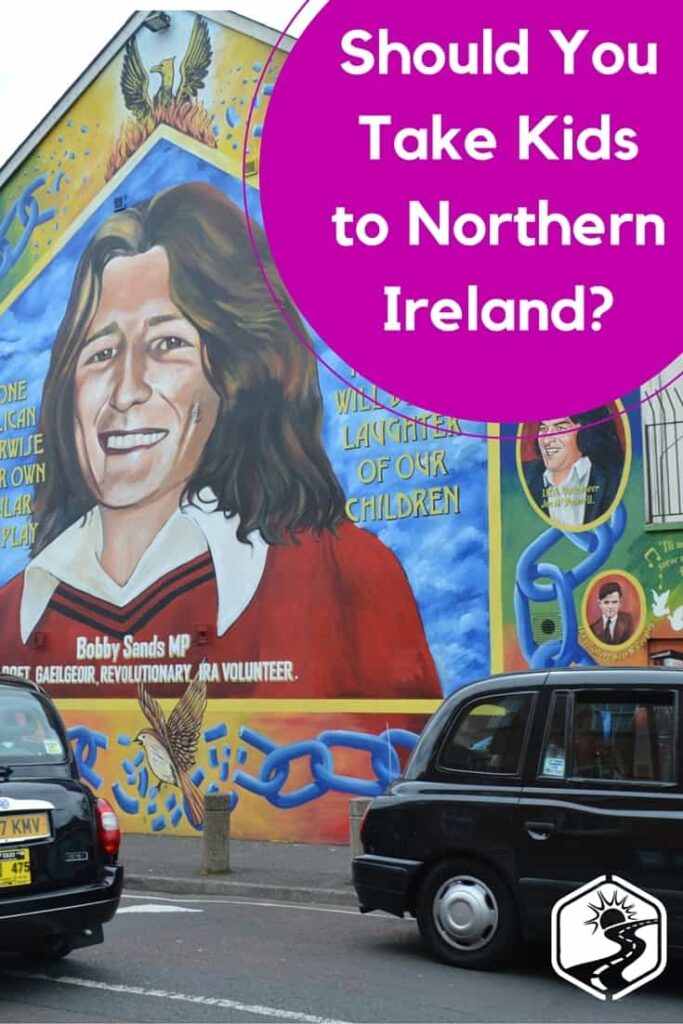Smells of Irish soda bread and sounds of joyous fiddle music were always present in my home growing up. My family was proud of their Irish heritage, which was celebrated on the regular in our home just outside of Boston, Massachusetts.
But among the silly Irish step dancing wigs and hidden leprechaun gold on St. Patrick’s Day, the unrest happening in Northern Ireland and the Republic of Ireland was rarely discussed. In fact, I knew almost nothing about it until I was a full-grown adult. Considering how much we respected and loved our family history, I’m surprised so few who identify with the Irish people are aware of what’s happening in the country.
It’s tough to find a place to begin when summarizing the situation. But very, very basically, there are two countries: Northern Ireland and the Republic of Ireland (ROI). Northern Ireland is considered part of the UK and the ROI is separate. Some people in Northern Ireland are loyal to the “British” rule, while others feel more connected to their “Irish” identity. The government tried to suppress these disagreements, which caused an uproar and revolution, dating back centuries. In recent decades, there was significant violence and fighting throughout the country on either side. Although peace was agreed upon, no real resolution was ever reached.
As this is very over-simplified, you almost have to be there to believe it. Last month I spent a wild 24-hours in Belfast and Northern Ireland and got a crash course in the area’s incredible history.
Full disclaimer: I was not there with children myself. I observed many families enjoying the sunshine, having meals out in cafes and sightseeing along the waterfront. There were kids picking flowers along the neighborhood gates, at the Peace Wall and in the neutral downtown area of Belfast. There are some trendy new restaurants, like Hadskis, that welcome foodies from all over to try local dishes, and the amazing Titanic Museum. I’m not sure if visiting little ones fully grasped what had happened in those very spots in recent history, but it was positive to see travelers trickling back into the city. It’s supporting local economy and making the country safer for everyone.
I think teens and older children would benefit most from the tours you can book in town. The Black Cab Tour we took was absolutely incredible and would be a huge eye-opener for any teenager. Our guide Gerard (or Gerry, or Jim, he was a little vague) had family who was part of the IRA and knew the ins and out of Belfast in his sleep. Most of the information was kept as neutral as possible, as he even introduced us to other drivers who were “loyalists” while we drove along. We had a private 2-3 hour tour that only cost about 15 euros each.
Besides being given a run-down of history dating back to the 1600s, Gerry showed us real-life happening to this present day. We weaved in and out of neighborhoods adorned with both the tri-color Irish flag and Union Jack insignias on either side of fences and streets. Belfast is arguably most famous for its murals, and we saw dozens of them. Each represented various moments in time, from martyred leaders to lines old child-like soldiers. The subject matter of many murals is mature and would be tough for little kids, but the Black Cab Tour company is happy to cater to your needs and preferences on what you’d like to see.
The Peace Wall is something incredibly powerful. It is miles and miles long and divided into several sections, much too high to see over the top. While there are unguarded gates allowing passage through to either side, these are still closed overnight to this day. Sections are covered in signatures, quotes and artwork to support peace on either side. Talks have occurred to tear it down, but they have remained secure since the 1970s.
Take a guided tour through Belfast with your family, as it’s the easiest (and safest) way to step back in time to learn about Northern Ireland’s colorful and tragic past. Signs of huge growth are everywhere, from the beautifully redesigned hotels, like Malmaison and the Europa, that were once rubble to the bustling seafront development. As years go on without conflict, the city is sure to continue to thrive and become a great place for visitors of all ages.
Would you take your family to a less-than-perfect destination? Would you take your family somewhere that has been deemed potentially dangerous by the media? Have you been to a conflict zone in your travels?









 Profesh traveling hot mess for 20 yrs
Profesh traveling hot mess for 20 yrs  Travel tips with fam & friends
Travel tips with fam & friends

 Travel guides
Travel guides 


 #ichreela
#ichreela
 )BIG PURE WANDER ANNOUNCEMENT! Fi
)BIG PURE WANDER ANNOUNCEMENT! Fi






 There’s always
There’s always


 SAVE THIS POST for your next Montana adventur
SAVE THIS POST for your next Montana adventur
 SAVE this post for the next time you go int
SAVE this post for the next time you go int

 SAVE For your next Newport, Rhode Island tr
SAVE For your next Newport, Rhode Island tr

 SEND this to someone who needs a WINK WINK NU
SEND this to someone who needs a WINK WINK NU


We loved Northern Ireland, and although our kids were with us, they were over 18…I think kids of all ages would love it.
Thanks Corinne! We loved it too and think it’s an essential part of any trip to that part of the world.
I think showing kids less than perfect situations, as long as you can do it safely, is so important for them to get a true view of the world. Things are not perfect. We visited Turkey this summer and did a lot of research about safety before we went. While many thought it wasn’t a good idea, it was a very safe and eye opening trip. More people should visit. Ireland is on our list of places to see and we always take the kids!
We take the kids everywhere:) And as much as we love to take them to every corner of the world, I think there are just places that are too dangerous for them or I should say for everyone. Though…. Northern Ireland is on our bucket list:) xoxo
I can definitely agree with that! Where WOULDN’T you take your kids right now?